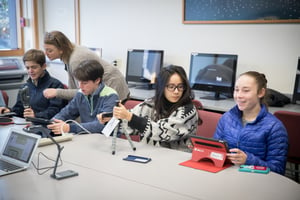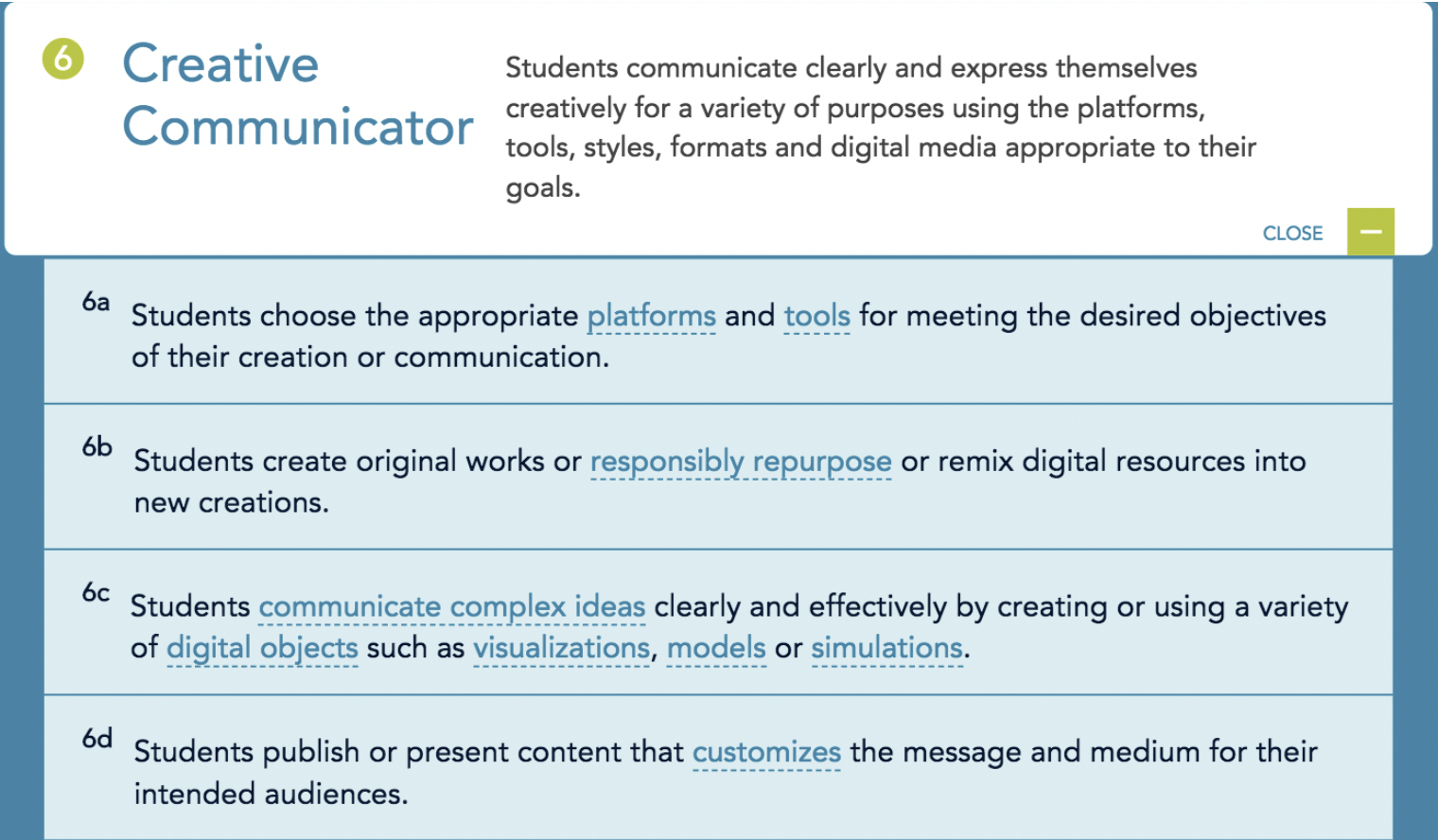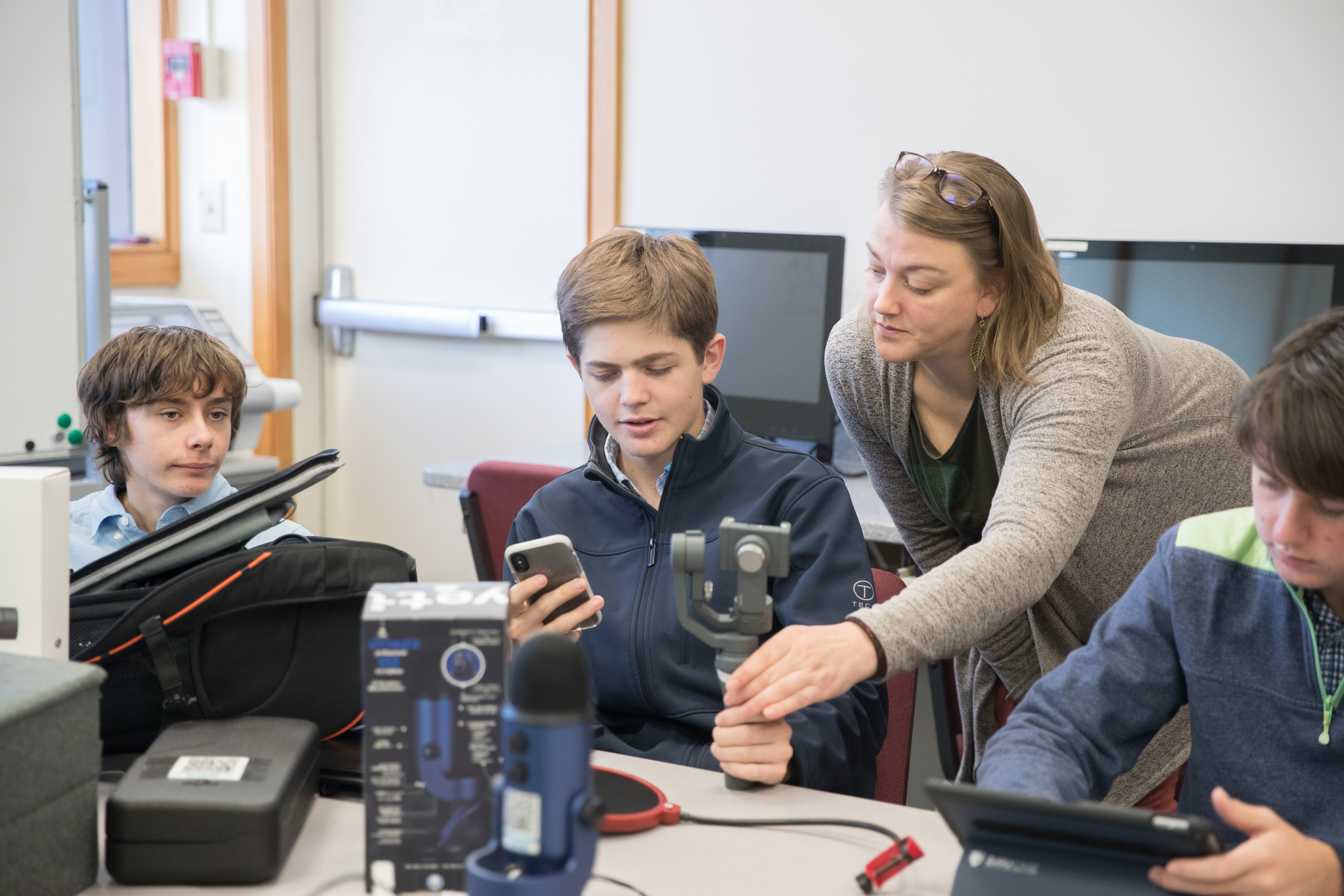“Creativity is as important now in education as literacy and we should treat it with the same status.”
― Sir Ken Robinson
 We are proud to announce Tabor’s first Mobile Media Lab. With the support of the Fund for Tabor, we were able to purchase professional level media equipment. We now have the means for students and faculty to create media rich content that is of high quality and full of possibility!
We are proud to announce Tabor’s first Mobile Media Lab. With the support of the Fund for Tabor, we were able to purchase professional level media equipment. We now have the means for students and faculty to create media rich content that is of high quality and full of possibility!
Why a Media Lab?
We see it every day… that familiar glow of a screen reflecting off students’ faces. The glow of blogs, vlogs, music, games, movies, Youtube, and social media. We know our students are excellent consumers of media, but are they excellent creators of media? Allowing our students to explore the creative process of creating digital content is essential to developing 21st century communication skills, digital literacy skills, and global competencies. How our world communicates continues to change at a rapid pace. Our students need the knowledge and skill to be aware of how media influences them as consumers, but they also need to learn how to be conscientious, empathetic, and creative media influencers. Providing opportunities for our students to explore the guts of creating media cultivates an expanded understanding of how and why messages are constructed in certain ways. This further enables them to analyze and respond to verbal and visual influence rather than just being influenced.
Digital media creation allows our students to take ownership of the creative process and offers a relevant medium to learning. The International Society for Technology in Education (ISTE) Students standards under “Creative Communicator” highlight some of the skills paramount to building 21st century communication skills.

How does the Media Lab work?
Students and faculty can sign out professional level film and digital recording equipment just as they would check out a book in the library. They can use equipment to produce classroom projects such as video productions, podcasts, music production, stop motion animation, time lapse, digital storytelling, Tabor live stream productions, and green screen productions. Your imagination is your only limitation. Over the past two weeks we have had several students and classes come in to the lab to begin projects. Physics students created a “Khan Academy” type of lesson with the green screen, while digital arts students began designing individualized trimester-long projects. There have also been Senior Project inquiries and students have expressed interest in creating a Tabor Communications Club. Students have also explored Tabor’s first Virtual Reality (VR) Goggles where they traveled across the globe, became a human cell traveling through the body, explored our solar system, and walked through Anne Frank's House.
Same lesson, different delivery, larger engagement:
Mr Townsend's AP Latin class used the media lab last Wednesday for a Latin skit they typically prepare for presentation in class. Previously, they would collaborate with a partner to research, write their script, rehearse, and then present in front of their peers. Integrating the Media lab into this project did not change the objectives of the project, it only enhanced the learning experience, built digital communication skills, and changed the medium for delivery. Instead of performing in front of their peers they used the new production studio to film their skit, learned how green screen technology works, edited in iMovie, and added music and a background. They also problem solved together, learned about digital flow within the process, and created awesome digital productions that can be shared beyond their classroom. The video format allowed Mr. Townsend to view their skit more than once in order to better assess their spoken language. Students also have the added opportunity to watch themselves for their own self reflection. Mr. Townsend commented, “The students were more polished, took more care with their lines, gestures, and added additional research in choosing relevant music and a background for their skit”. These pieces are now evidence of skill but most importantly, the students were engaged, taking full ownership of the creative process, and naturally wanting to produce their best work. Check out Leah and Grace’s video here. This was their first time in the Media Lab!
I am really excited to watch how the Media Lab will evolve over the course of this year and beyond. It has already been so satisfying to witness the student’s excitement for this space - seeing the smiles, hearing the laughs, and watching the creative process unfold. When we hear a student say “that was fun,” we should never take it lightly. It is important to hear this enthusiasm regularly in our classrooms. With the right objectives and intentions in our lessons, the phrase “that was fun” translates to engagement, curiosity, interest, and ownership of learning that goes beyond the Ferris Bueller error into the 21st Century.









